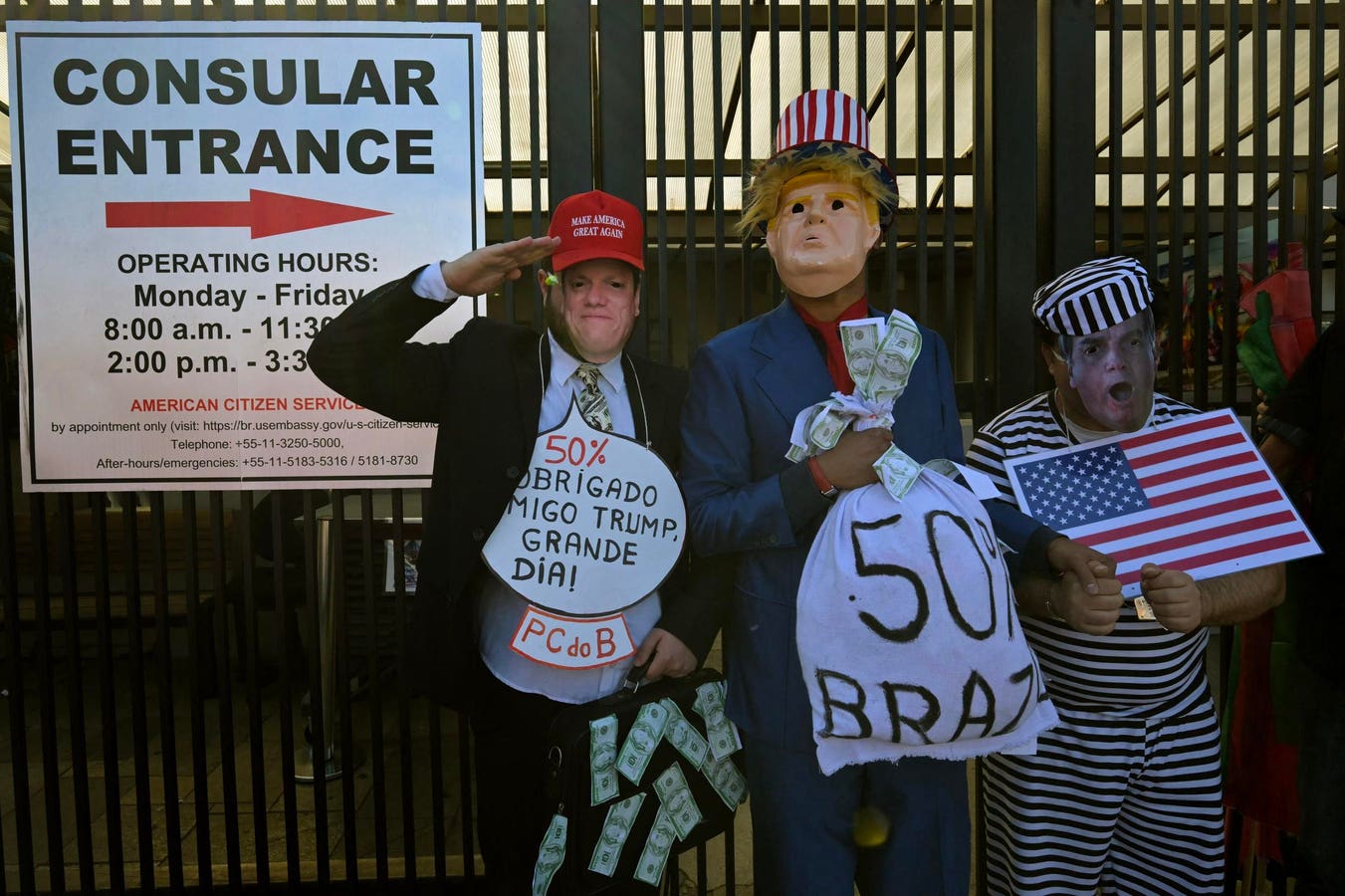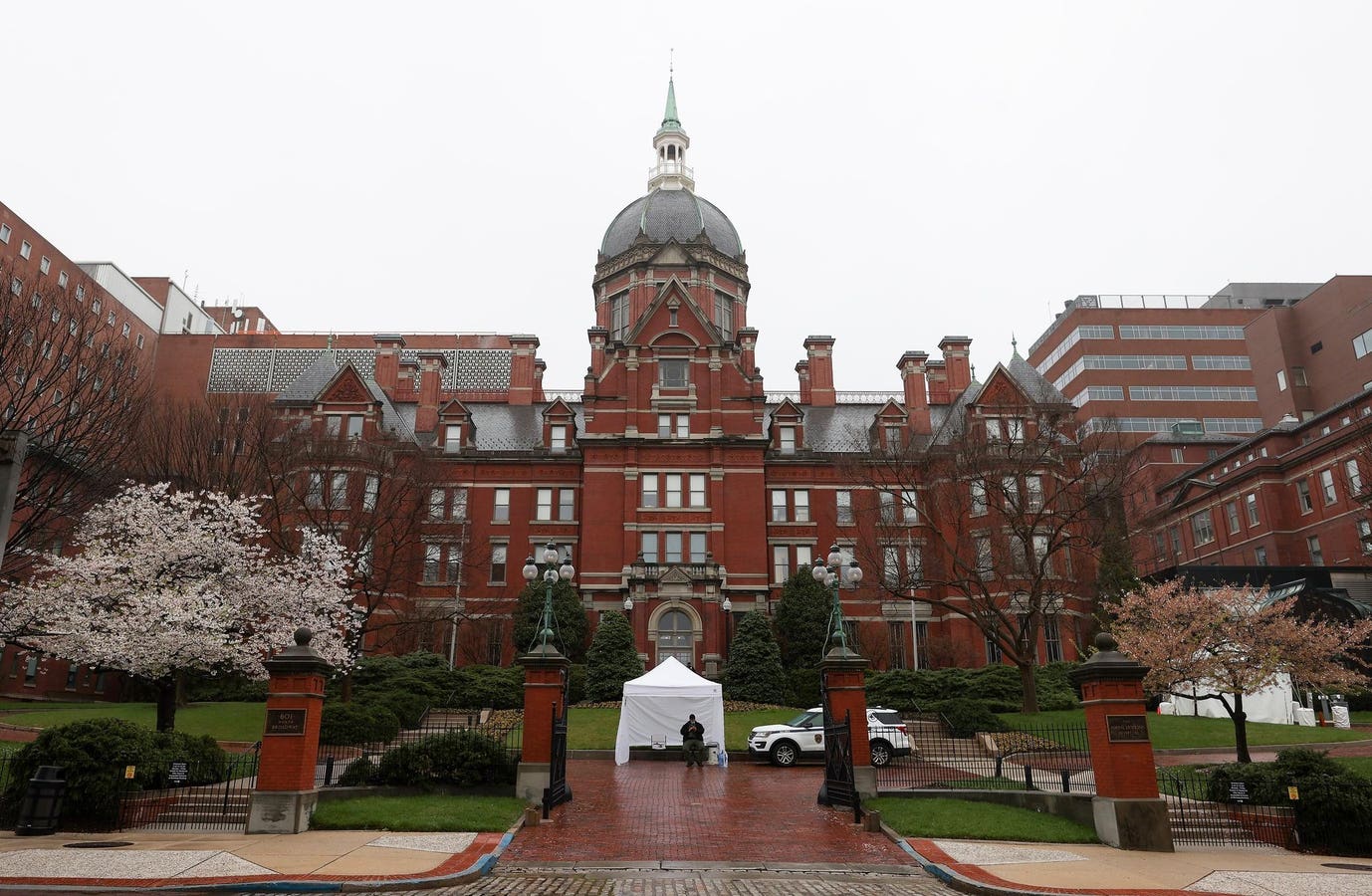Activists wearing masks of (L to R) Sao Paulo’s governor Tarcisio de Freitas, US President Donald Trump, and Brazil’s former President Jair Bolsonaro, stand during a protest in defence of national sovereignty following the US government trade taxes and sanctions on Brazil, outside the US consulate, in Sao Paulo, Brazil, on August 1, 2025. Trump’s Brazil tariff is among the highest imposed on US trading partners, and unlike with other countries, the measures have been framed in openly political terms, sweeping aside centuries-old trade ties and a surplus that Brasilia put at $284 million last year. (Photo by NELSON ALMEIDA / AFP) (Photo by NELSON ALMEIDA/AFP via Getty Images)
AFP via Getty Images
The average U.S. tariff rate is estimated to rise to 11.4% in 2025 in the light of much of the Trump administration’s so-called reciprocal tariffs reinstated since this week. This is according to calculations by the Tax Foundation based on data from the U.S. Census Bureau and the U.S. International Trade Commission. The rate was last this high in the 1940s, which marked a transition period that saw tariff rates come down from higher Great Depression levels towards those associated with the most recent era of trade liberalization and trade agreements.
While 50% tariff rates on Brazil are already in effect—making them the highest under current U.S. policy—50% tariffs on India are supposed to go live at the end of the month. Both countries have seen these extraordinarily high tariff levels tied to actions the Trump administration thinks they should be discontinuing. For Brazil, it is the prosecution of Trump ally and former President Jair Bolsonaro, while for India the reason given is the import of copious amounts of cheap Russian oil that has been shunned in the world markets. Beside these, the highest rates the administration has set internationally are 41% on imports from Syria, 40% on those from Laos and Myanmar as well as 39% for goods from Switzerland.
This chart shows the estimated average U.S. tariff rate of all imports (1821-2025).
Statista
The U.S. average tariff rate would be even higher were it not for trade agreements (or more frequently their rough outlines) that the U.S. has set up with seven international partners over the past months. The deals are lowering import duties for the European Union from 30% to 15% and for Japan and South Korea from 25% to 15%. These rates are applicable for the import of cars also, which are tariffed separately by the Trump administration. The United Kingdom even lowered the automotive rate to 10% for 100,000 British cars annually and got its steel and aluminium tariffs thrown out, while Vietnam’s trade agreement lowered its overall rate significantly. However, on August 12, a pause on higher tariffs with China might come to an end, which could shake things up once more.
The Tax Foundation estimates that the true tariff rate for the U.S. is currently higher, also when taking into account how much of which tariffed good is actually imported. The so-called applied trade-weighted average now stands at a whopping 21.1%, according to the organization. The analysts, however, expect the effective rate after behavioral adjustments by buyers and importers to arrive at 11.4%. At a government revenue increase of a projected 0.53%, Trump’s tariffs constitute the largest tax hike since 1993, the Tax Foundation writes, criticising that businesses and consumers are expected to bear the brunt of the extra cost that imports to the United States now incur.
The Consequences?
Due to numerous exceptions, also now including all goods covered by the United States-Mexico-Canada trade agreement, an estimated 70 percent of U.S. imports are currently subject to tariffs. In 10 years, this would accrue $2.1 trillion, still only a fraction of the current annual U.S. GDP of around $28 trillion. Yet, the U.S. is expected to lose 0.8% of GDP due to tariffs as well as almost 800,000 full-time jobs. This is compared to GDP losses of 0.2% and job losses of 27,000 for Trump’s first-term tariffs. For the regular American, after-tax income is expected to decrease by around 1.4%.
Charted by Statista









